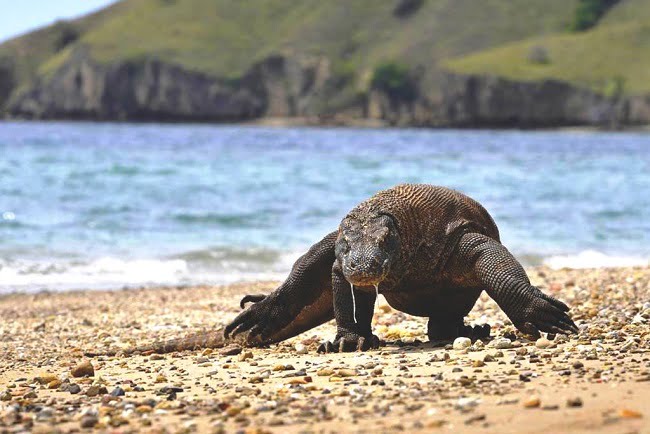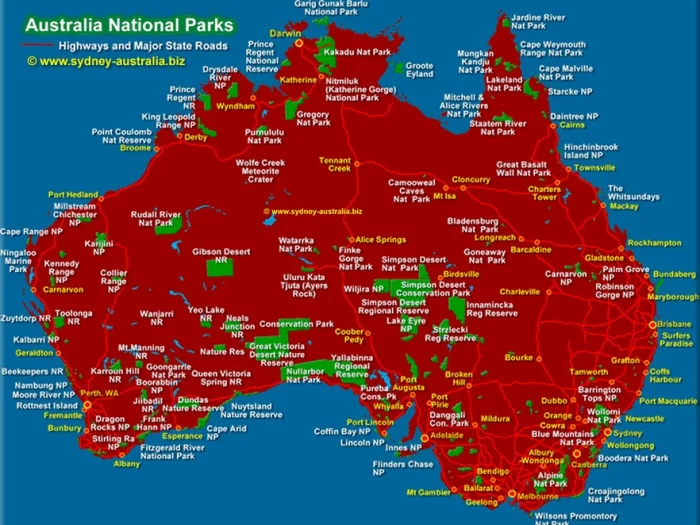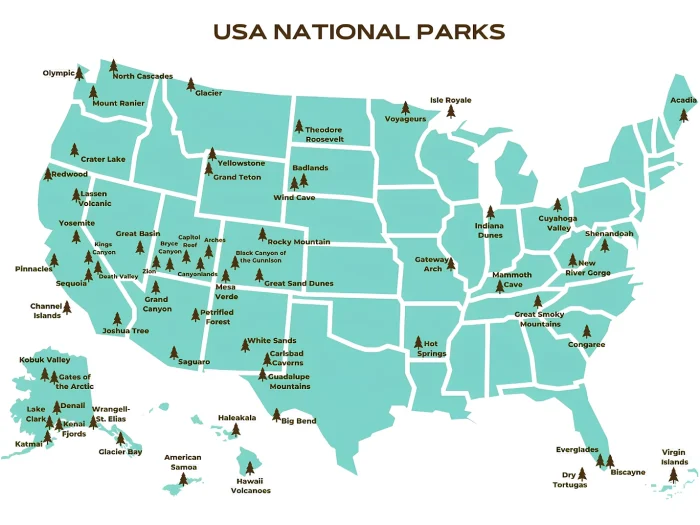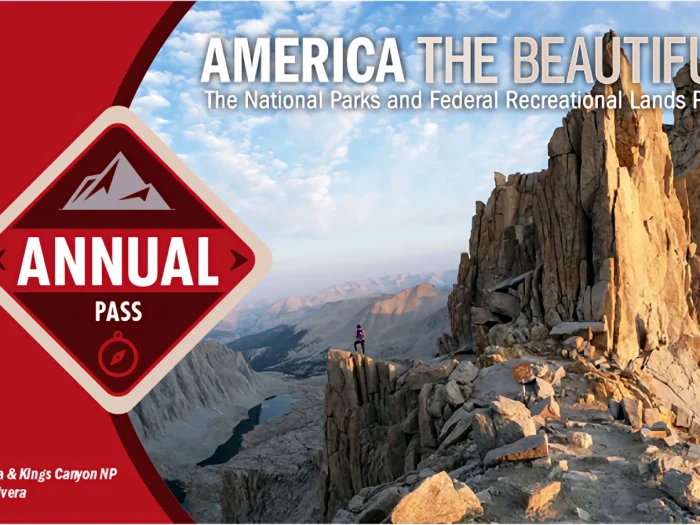Welcome to Komodo National Park
Welcome to Komodo National Park
Komodo National Park is a national park located within the Lesser Sunda Islands in the border region between the provinces of West Nusa Tenggara and East Nusa Tenggara , Indonesia. The park includes the three larger islands Komodo, Rinca and Padar , and 26 smaller ones, with a total area of 1,733 km2 (603 km2 of it land). The national park was founded in 1980 to protect the world’s largest lizard – Komodo dragon, the world’s largest lizard. Later it was dedicated to protecting other species, including marine species. The national park was declared a UNESCO World Heritage Site in 1991 .
Komodo National Park has been selected as one of the New Seven Wonders of Nature. The waters around
Komodo island contains rich marine biodiversity. Komodo islands is also a part of the Coral Triangle, which contains some of the richest marine biodiversity on Earth.
In 1980 Komodo National Park was established , with the main purpose of the Park was to conserve the unique Komodo dragon and its habitat. However, over the years, the goals for the Park have expanded to protecting its entire biodiversity, both terrestrial and marine. In 1986, the Park was declared a Man and Biosphere Reserve and a World Heritage Site by UNESCO, both indications of the Park’s biological importance.
How to Get to Komodo National Park
Getting to Komodo National Park requires traveling to Labuan Bajo, the gateway town on Flores Island, Indonesia. From Labuan Bajo, you can take a boat to the park. Here’s a step-by-step guide:
1. Fly to Labuan Bajo (Komodo Airport – LBJ)
The fastest and easiest way to reach Komodo National Park is by flying to Komodo Airport (LBJ) in Labuan Bajo.
- From Bali (Denpasar – DPS): Direct flights (1.5 hours) with airlines like Garuda Indonesia, Batik Air, or Wings Air.
- From Jakarta (CGK): Direct flights (about 2.5 hours) or connecting flights via Bali.
- From Surabaya (SUB) or Lombok (LOP): Some airlines offer connecting flights to Labuan Bajo.
2. Take a Boat from Labuan Bajo to Komodo National Park
Once in Labuan Bajo, you’ll need a boat to reach the islands within Komodo National Park. Options include:
- Public Ferries: Slow boats (about 4–5 hours) available for budget travelers.
- Speedboats: Fast boats (about 1–2 hours) available for day trips.
- Liveaboard Tours: Multi-day boat trips (2–4 days) offering island-hopping experiences.
- Private Boat Charters: For a more comfortable and customizable journey.
3. Popular Routes to Komodo National Park
- Labuan Bajo → Rinca Island (1.5–2 hours by boat)
- Labuan Bajo → Komodo Island (3–4 hours by boat)
- Labuan Bajo → Padar Island (2–3 hours by boat)
Some boats stop at other attractions like Pink Beach, Manta Point, and Taka Makassar along the way.
Alternative Route: Overland from Bali or Lombok
If you prefer a scenic adventure, you can travel overland and by sea from Bali or Lombok to Flores:
- Bus or Flight from Bali to Lombok
- Bus/Ferry from Lombok to Sumbawa
- Ferry from Sumbawa to Labuan Bajo
This journey takes 2–3 days and is recommended for travelers with more time.
Best Time to Visit Komodo National Park
- April to June – Lush green landscapes, good diving conditions
- July to August – Peak season, best for trekking and wildlife spotting
- September to November – Best for diving/snorkeling with manta rays
- December to March – Rainy season, fewer tourists, but some activities may be affected
Komodo National Park Fees
Entrance Fee: For foreign visitors, the entrance fee is IDR 150,000 per person per day on weekdays (Monday to Saturday). On Sundays and public holidays, the fee increases to IDR 225,000 per person per day.
Snorkeling Fee: If you plan to snorkel within the park, there’s an additional fee of IDR 15,000 per person per day.
Wildlife Observation Fee: To observe wildlife, including Komodo dragons, a fee of IDR 10,000 per person per day applies.
Trekking Fee: For trekking activities on islands like Komodo, Rinca, or Padar, a trekking fee of IDR 5,000 per person per day is required.
Ranger Fee: A ranger fee of IDR 180,000 per group (for 1 to 5 persons) is charged for guided treks on Komodo, Rinca, and Padar Islands.
Boat Parking Fee: Boats entering the park are subject to a parking fee of IDR 100,000 per boat. Larger boats, such as Phinisi boats, incur a fee of IDR 150,000 per boat.
Local Government Retribution: An additional local government retribution fee of IDR 50,000 per person is applicable.
Note: the charter prices may change with or without prior notice
Komodo National Park Tourism
Scuba diving is popular because of the park’s high marine biodiversity. The development of, largely marine-based, ecotourism is the main strategy to make the park self-financing and generate sufficient revenue through entrance fees and tourism licenses to cover operational and managerial costs. To this end, a joint venture between TNC and a tourism operator were granted a tourism concession, that also entails extensive park management rights.[17] This concession has generated an ongoing controversy. The joint venture has been accused of making decisions behind closed doors, and many people in and around Komodo claim that they haven’t been consulted regarding decisions that ultimately affect their lives.
Komodo Island and Rinca were once part of Flores and they are separated from the large Island of Sumbawa to the West by the Sape Strait. The ocean in the Strait drops hundreds of meters. The Pacific Ocean to the north and the Indian ocean to the south are actually at different heights – so the flow of currents from the Pacific to the Indian during tidal exchanges makes the currents among the strongest in the world. In the (relatively) shallow waters along the east coast of Komodo towards Labaun Bajo, these currents can be extremely dangerous with inexperienced guides.
The number of visitors to the park increased from 36,000 in 2009 to 45,000 in 2010. Most of the visitors were foreign tourists as the high transport cost to this remote location is less affordable for local visitors. A year the park can accommodate up to 60,000 visitors according to the local tourism agency.
Several types of boat tours run through the national park including upscale scuba liveaboards, short daily snorkel trips and 4 day, 3 night ‘tourist boats’ between Lombok and Flores. Have uncertain safety records althoght the tourist boats run very frequently . In an August 2014 incident one of these tourist boats sank, and 2 tourists were lost. Strong waves and currents separated the stranded crew and passengers who were floating at sea in lifevests.
Weather of Komodo National Park
The terrain is generally rugged, characterized by rounded hills, with altitudes up to 735 m. The climate is one of the driest of Indonesia with annual rainfall between 800mm and 1000mm. Mean daily temperatures in the dry season from May to October are around 40 °C.





